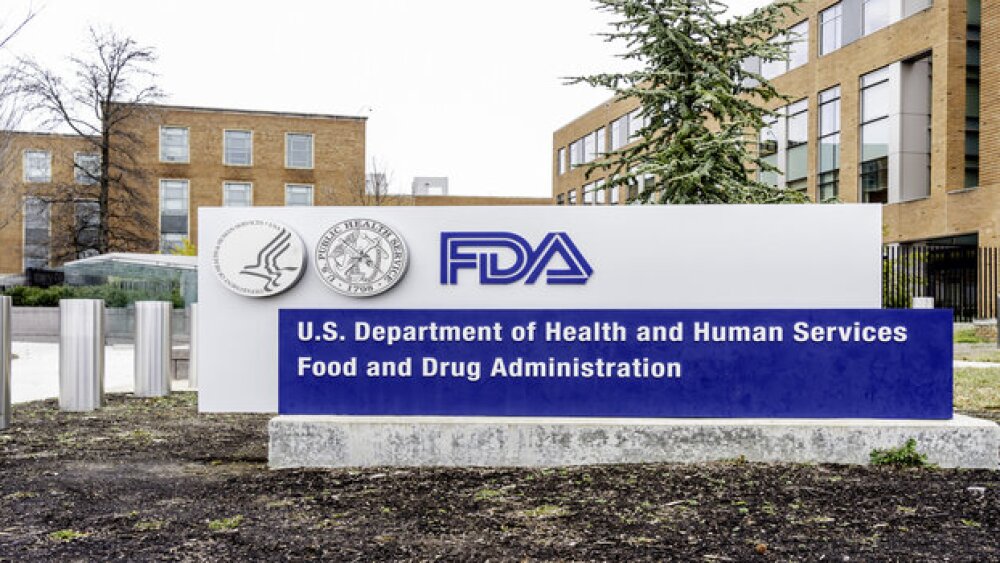AstraZeneca’s BRILINTA ® (ticagrelor) has been approved in the US to reduce the risk of stroke, a leading cause of disability and death worldwide, in patients with acute ischemic stroke (National Institutes of Health Stroke Scale score ≤5) or high-risk transient ischemic attack (TIA). The approva

New indication expands use of BRILINTA beyond cardiovascular disease to patients with mild-to-moderate stroke
WILMINGTON, Del.--(BUSINESS WIRE)-- AstraZeneca’s BRILINTA® (ticagrelor) has been approved in the US to reduce the risk of stroke, a leading cause of disability and death worldwide, in patients with acute ischemic stroke (National Institutes of Health Stroke Scale score ≤5) or high-risk transient ischemic attack (TIA).
The approval by the US Food and Drug Administration (FDA) was based on positive results from the THALES Phase III trial that showed aspirin plus BRILINTA 90mg significantly reduced the rate of the composite of stroke and death compared to aspirin alone in patients with acute ischemic stroke or TIA.1 The decision follows the Priority Review designation granted by the FDA in July 2020.
Dr. Clay Johnston, lead investigator for the THALES Phase III trial and Dean of the Dell Medical School at The University of Texas in Austin, US, said: “One in four patients who have had a stroke will experience a second one, with the risk particularly high within the first 30 days. The approval of BRILINTA in combination with aspirin is an important advancement to reduce the risk of recurrent stroke and much-awaited good news for physicians and patients.”
Mene Pangalos, Executive Vice President, BioPharmaceuticals R&D, said: “In the US, someone has a stroke every 40 seconds and the impact on a person’s life can be truly devastating. BRILINTA is a well-established medicine across patients with coronary artery disease and with today’s approval, we can now expand its potential to patients with an acute ischemic stroke or transient ischemic attack.”
The THALES trial demonstrated that BRILINTA 90mg used twice daily and taken with daily aspirin for 30 days, reduced the rate of the primary composite endpoint of stroke and death by 17% (absolute risk reduction = 1.1%; hazard ratio 0.83; 95% confidence interval 0.71-0.96, p=0.015), compared to aspirin alone in patients with an acute ischemic stroke or TIA.1 This was a statistically significant and clinically meaningful reduction. The primary composite endpoint was driven by a reduction in stroke.
The risk for severe bleeding events was 0.5% in patients receiving aspirin plus BRILINTA and 0.1% for aspirin alone. The results were in line with the known safety profile of BRILINTA.1 Full data from the THALES Phase III trial can be found in The New England Journal of Medicine.
Regulatory submissions to expand the approved indication are also under regulatory review in China and in the EU where the medicine’s name is Brilique.
BRILINTA is approved in more than 110 countries for the prevention of atherothrombotic events in adult patients with acute coronary syndrome (ACS) and in more than 70 countries for the secondary prevention of cardiovascular events among patients who are at high-risk and have experienced a heart attack. In May 2020, the US FDA approved a new indication for BRILINTA to include the reduction of the risk of a first heart attack or stroke in high-risk patients with coronary artery disease.
INDICATIONS
- BRILINTA is indicated to reduce the risk of cardiovascular death, myocardial infarction (MI), and stroke in patients with acute coronary syndrome (ACS) or a history of myocardial infarction. For at least the first 12 months following ACS, it is superior to clopidogrel. BRILINTA also reduces the risk of stent thrombosis in patients who have been stented for treatment of ACS.
- BRILINTA is indicated to reduce the risk of a first MI or stroke in patients with coronary artery disease (CAD) at high risk for such events. While use is not limited to this setting, the efficacy of ticagrelor was established in a population with type 2 diabetes.
- BRILINTA is indicated to reduce the risk of stroke in patients with acute ischemic stroke (NIH Stroke Scale ≤5) or high-risk transient ischemic attack (TIA).
DOSING
- In the management of ACS, initiate BRILINTA treatment with a 180-mg loading dose. Administer 90 mg twice daily during the first year after an ACS event. After one year administer 60 mg twice daily.
- In patients with CAD but no prior stroke or MI, administer 60 mg twice daily.
- In patients with acute ischemic stroke or high-risk TIA, initiate treatment with a 180-mg loading dose of BRILINTA and then continue with 90 mg twice daily for up to 30 days. The treatment effect accrued early in the course of therapy. Use BRILINTA with a loading dose of aspirin (300 to 325 mg)
- Use BRILINTA with a daily maintenance dose of aspirin of 75-100 mg.
IMPORTANT SAFETY INFORMATION FOR BRILINTA® (ticagrelor) 60-MG AND 90-MG TABLETS
WARNINGS:
A. BLEEDING RISK
- BRILINTA, like other antiplatelet agents, can cause significant, sometimes fatal bleeding
- Do not use BRILINTA in patients with active pathological bleeding or a history of intracranial hemorrhage
- Do not start BRILINTA in patients undergoing urgent coronary artery bypass graft surgery
- If possible, manage bleeding without discontinuing BRILINTA. Stopping BRILINTA increases the risk of subsequent cardiovascular events
B. ASPIRIN DOSE AND BRILINTA EFFECTIVENESS IN PATIENTS WITH ACS
- Maintenance doses of aspirin above 100 mg reduce the effectiveness of BRILINTA and should be avoided
CONTRAINDICATIONS
- BRILINTA is contraindicated in patients with a history of intracranial hemorrhage or active pathological bleeding such as peptic ulcer or intracranial hemorrhage. BRILINTA is also contraindicated in patients with hypersensitivity (eg, angioedema) to ticagrelor or any component of the product
WARNINGS AND PRECAUTIONS
- Dyspnea was reported more frequently with BRILINTA than in patients treated with control agents. Dyspnea from BRILINTA is often self-limiting
- In patients being treated for coronary artery disease, discontinuation of BRILINTA will increase the risk of MI, stroke, and death. When possible, interrupt therapy with BRILINTA for 5 days prior to surgery that has a major risk of bleeding. If BRILINTA must be temporarily discontinued, restart as soon as possible
- Ticagrelor can cause ventricular pauses. Bradyarrhythmias including AV block have been reported in the post-marketing setting. Clinical trials excluded patients at increased risk of bradyarrhythmias not protected by a pacemaker, and they may be at increased risk of developing bradyarrhythmias
- Avoid use of BRILINTA in patients with severe hepatic impairment. Severe hepatic impairment is likely to increase serum concentration of ticagrelor and there are no studies of BRILINTA in these patients
- In patients with Heparin Induced Thrombocytopenia (HIT): False negative results for HIT-related platelet functional tests, including the heparin-induced platelet aggregation (HIPA) assay, have been reported with BRILINTA. BRILINTA is not expected to impact PF4 antibody testing for HIT
ADVERSE REACTIONS
- The most common adverse reactions (>5%) associated with the use of BRILINTA included bleeding and dyspnea
DRUG INTERACTIONS
- Avoid use with strong CYP3A inhibitors and strong CYP3A inducers. BRILINTA is metabolized by CYP3A4/5. Strong inhibitors substantially increase ticagrelor exposure and so increase the risk of adverse events. Strong inducers substantially reduce ticagrelor exposure and so decrease the efficacy of ticagrelor
- As with other oral P2Y12 inhibitors, co-administration of opioid agonists delay and reduce the absorption of ticagrelor. Consider use of a parenteral anti-platelet in ACS patients requiring co-administration
- Patients receiving more than 40 mg per day of simvastatin or lovastatin may be at increased risk of statin-related adverse events
- Monitor digoxin levels with initiation of, or change in, BRILINTA therapy
SPECIAL POPULATIONS
- Lactation: Breastfeeding not recommended
Please read full Prescribing Information, including Boxed WARNINGS, and Medication Guide.
Stroke
An ischemic stroke is caused by a blockage cutting off the blood supply to a region of the brain. A transient ischemic attack, is a temporary blockage of the blood supply to a region of the brain, resulting in symptoms only lasting for a short amount of time. Stroke is a leading cause of disability and death worldwide.2 In the US, someone has a stroke every 40 seconds, and every four minutes, someone dies of stroke.3 About one in four strokes are recurrent, with the risk particularly high within 30 days after the initial event and even higher when looking at time periods closer to the initial event.4,5
THALES
THALES is an AstraZeneca-sponsored, randomized, placebo-controlled, double-blinded, international, multicenter, event-driven Phase III trial involving more than 11,000 patients from 28 countries. It tested the hypothesis whether aspirin plus BRILINTA is superior to aspirin alone in preventing the composite of stroke and death in patients with non-cardioembolic acute ischemic stroke or high-risk TIA. Patients were randomized within 24 hours of onset of acute ischemic stroke or high-risk TIA symptoms and treated for 30 days. Study treatments were BRILINTA 180mg loading dose on day 1, followed by 90mg twice daily on days 2-30, or matching placebo. All patients received open-label aspirin 300-325mg on day 1, followed by 75-100mg once daily on days 2-30. The primary efficacy outcome was the time to the composite endpoint of stroke and death at 30 days. The primary safety outcome is time to first severe bleeding event according to the Global Utilization of Streptokinase and Tissue Plasminogen Activator for Occluded Coronary Arteries (GUSTO) definition, which includes fatal bleedings, intracranial hemorrhage; and bleeding causing hemodynamic compromise requiring intervention.
AstraZeneca in CV, Renal & Metabolism (CVMD)
CV, renal and metabolism together form one of AstraZeneca’s main therapy areas and a key growth driver for the Company. By following the science to understand more clearly the underlying links between the heart, kidneys and pancreas, AstraZeneca is investing in a portfolio of medicines to protect organs and improve outcomes by slowing disease progression, reducing risks and tackling co-morbidities. Our ambition is to modify or halt the natural course of CVMD diseases and potentially regenerate organs and restore function, by continuing to deliver transformative science that improves treatment practices and CV health for millions of patients worldwide.
About AstraZeneca
AstraZeneca is a global, science-led biopharmaceutical company that focuses on the discovery, development and commercialization of prescription medicines, primarily for the treatment of diseases in three therapy areas - Oncology, Cardiovascular, Renal & Metabolism and Respiratory. AstraZeneca operates in over 100 countries and its innovative medicines are used by millions of patients worldwide. For more information, please visit www.astrazeneca-us.com and follow us on Twitter @AstraZenecaUS.
References
1. Brilinta (ticagrelor) prescribing information. AstraZeneca Pharmaceuticals LP.
2. Johnston SC, Amarenco P, Denison H, et al. Ticagrelor and aspirin or aspirin alone in acute ischemic stroke or TIA. N Engl J Med 2020; 383:207-217.
3. Virani SS, Alonso A, Benjamin EJ et al. Heart disease and stroke statistics—2020 update: a report from the American Heart Association. Circulation. 2020;141(9):e139–e596.
4. Hankey GJ. Secondary stroke prevention. Lancet Neurol 2014; 13(2):178–94.
5. Coull AJ, Lovett JK, and Rothwell PM. Population based study of early risk of stroke after transient ischaemic attack or minor stroke: implications for public education and organisation of services. BMJ. 2004;328:326.
View source version on businesswire.com: https://www.businesswire.com/news/home/20201106005212/en/
Contacts
Media Inquiries
Michele Meixell
+1 302 885 2677
Brendan McEvoy
+1 302 885 2677
Source: AstraZeneca





